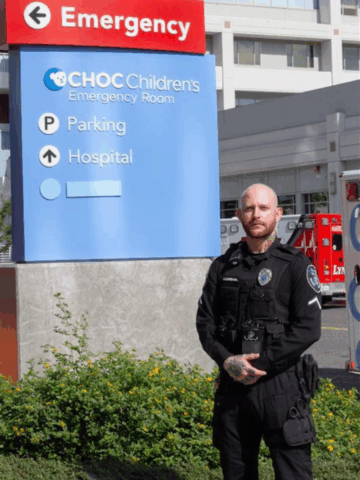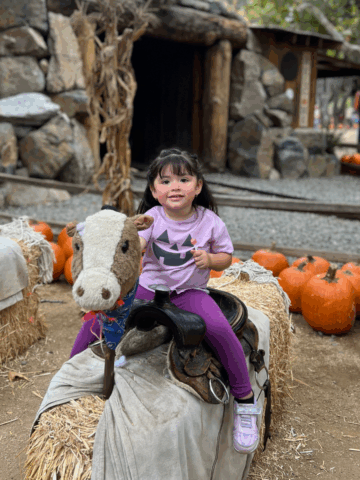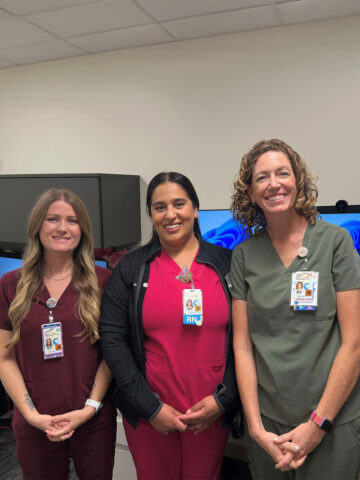When Charlie Anaya woke up after being in a coma for two months, the 10-year-old had a question for her mother:
“Why are the lights out?”
A rare walnut-sized tumor, called a germ cell tumor, in the center of her brain had pressed against her optic nerve, causing blindness. Less than 5 percent of children get them, says Dr. Mariko Sato, director of CHOC’s Brain and Spine Tumors Program.
Because Charlie’s tumor was bleeding and was in a sensitive area, it was too risky to remove it. But it was critical to relieve the pressure it was causing on her brain. She underwent an immediate surgery with Dr. William Loudon. Following surgery, she went through six rounds of chemotherapy.
Although CHOC clinicians had saved Charlie’s life, they couldn’t save her sight.
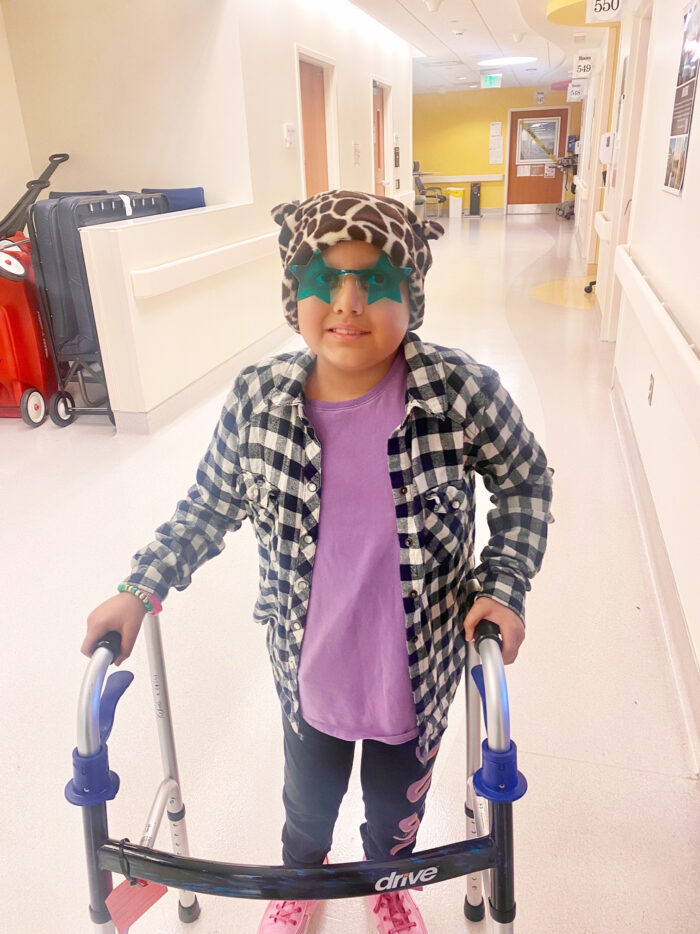
The brown-eyed fourth-grader who, previous to falling ill, had been practicing jiu jitsu and enjoying camping and kayaking as a Junior Girl Scout was confused and frightened.
Then, one day in late March 2023, Charlie met a CHOC volunteer named Paul.
A chance encounter
That day, Charlie’s mother, Leti, took her to CHOC’s Family Resource Center (FRC) for the first time.
For nearly four months, as Charlie recovered in the Hyundai Cancer Institute at CHOC, Leti had visited the FRC alone to get books to read for her daughter.
They visited the FRC on a Tuesday afternoon during the four hours that Paul Breckenridge works every week as a volunteer.
Leti grabbed a couple of books.
“Will you describe the covers to me?” Charlie asked her mother.
Leti went into a detailed description of the book covers.
Paul approached them.
“Hi, excuse me, I’m a volunteer,” he said. “I’m Paul.”
He turned toward Charlie.
“Do you have a problem with your vision?” he asked.
Leti explained how Charlie’s brain tumor had caused her to lose sight.
“Do you know I’m blind?” Paul asked.
‘Your life doesn’t stop’
Back in 1984, when he was 14 years old, Paul was diagnosed with acute myeloid leukemia (AML) and underwent a bone marrow transplant as well as high doses of radiation therapy during his year in a hospital.
He developed radiation retinopathy – damage to the retina due to exposure to ionizing radiation – and, over the years, his eyesight slowly degenerated.
Paul stopped driving in 2010 and retired in 2014 as a sixth-grade math and science teacher.
“I was able to work until my sight got really bad,” says Paul.
Now, he’s completely blind in his right eye and has 15 percent sight in his left eye.
He can only detect light and shadows – no detail.
“It’s very scary to lose your eyesight,” Paul told Charlie. “But it doesn’t change much of anything. Your life doesn’t stop. You can still live an incredibly full life.”
Paul, a CHOC volunteer for five years, told Charlie how he goes open-ocean outrigger racing twice a week at the Newport Beach Aquatic Center as a member of the Makapō Aquatics Project, which helps people with disabilities live active lives.
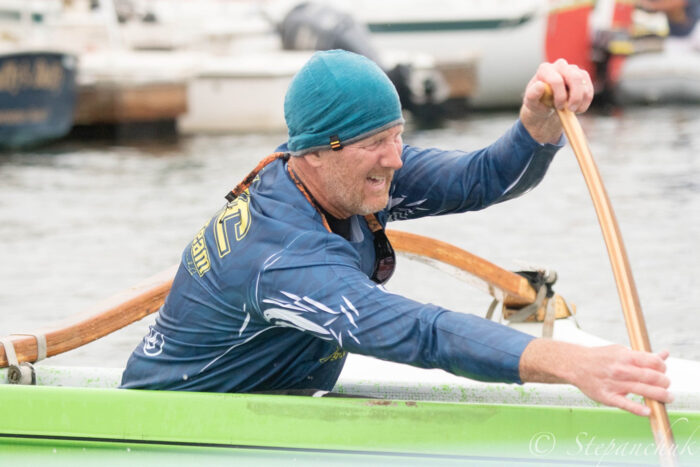
He told her about the Keiki Krew Paddling Team for children ages 8 to 18 with disabilities.
“That made me feel happy,” Charlie says.
‘A light switched on’
Paul misses teaching and says CHOC’s a perfect fit.
At the FRC, located on the second floor of CHOC’s Bill Holmes Tower, he developed an early literacy program for new parents.
“Finding this volunteer opportunity has been very powerful for me,” Paul says.
Rose Ovalle, a patient and family experience program manager who runs the FRC, calls Paul a remarkable volunteer.
“What stands out is his warmth and the welcoming presence he brings to the Family Resource Center,” Rose says. “His enthusiasm and positive energy have made an enormous impact on patients and families. Paul’s compassion and dedication to his work are evident in the way he interacts with our visitors.”
When Paul told Charlie he was blind, “it was as if a light switched on,” Rose recalls.
“She became much more engaged and comfortable. Paul’s ability to connect with others, despite his own challenges, is truly inspiring and makes him an invaluable member of CHOC.”
Charlie and Paul met again a couple of days before CHOC discharged her on April 28.
She was a vibrant presence in her wheelchair that day, wearing star-shaped green sunglasses and a T-shirt of Mexican artist Frida Kahlo and a giraffe-print beanie and bracelet she made of green and gold beads.
Paul encouraged Charlie to seek out resources for the blind and to learn Braille.
“You know what things look like, so that’s an incredible advantage for you,” he told her. “If I were to say to you ‘tree,’ you see a tree. If I say ‘car,’ you know what a car is. Your mind’s eye is working just fine.”
A fighting spirit
Charlie’s nearly four-month stay at CHOC has been full of milestones, and the nurses and other staff members of the Hyundai Cancer Institute will sorely miss her.
Oncology music therapist Karoline Thompson worked with Charlie multiple times a week throughout her admission. At the start of Charlie’s treatment, Karoline would play and sing Charlie’s favorite songs with her and her family — along with Leti, Charlie has a father, Reynaldo; a brother, James, 15; and a sister, Samantha, 13.
As Charlie became more alert, she took a more and more active role in the music-making through instrument play and singing along, Karoline says.
“It was clear from the beginning that she has an incredibly spirited and playful personality,” she says.
The culmination of the months Karoline and Charlie worked together was a recording project that features Charlie and Karoline singing “Roar” by Katy Perry together. The song is paired with a recording of Charlie’s heartbeat that acts as a drumline with the music.
“The entire Anaya family has dealt with extraordinary circumstances with resilience, love, and laughter,” Karoline says. “I am incredibly honored to have been part of their journey.”
Child Life specialist Erin Kelley says Charlie embodies the resilience of patients in the Hyundai Cancer Institute.
“She’s an incredible 10-year-old girl who has endured so much this past year,” Erin says.
Charlie has had trouble with memory. Erin created a timeline to help her understand everything she had gone through since her diagnosis.
“Charlie spent Thanksgiving, Christmas, and her birthday (Dec. 24) at CHOC,” Erin recalls. “The Child Life team and I worked hard to make these holidays special for her family despite spending them in the hospital.
“Although Charlie is blind,” Erin adds, “she is still able to enjoy all of the fun things at CHOC like Seacrest Studios, the FRC, going outside, and doing activities in her room. Charlie even participated in our Easter Egg hunt on the outdoor patio. Her fighting spirit is inspirational; she does not let her visual impairment bring her down and she is the true example of living life to its fullest.”
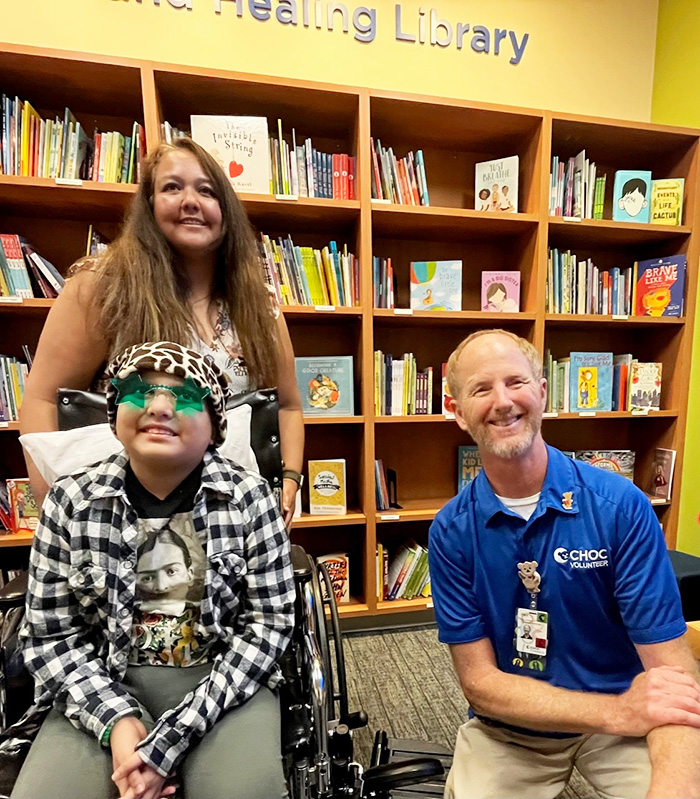
Hope
Following a planned surgery at CHOC, Charlie is scheduled to undergo proton therapy for six weeks at a specialty center.
Frequent small, targeted doses are required to make sure her tumor doesn’t return.
“She’s a tough girl, definitely,” Dr. Sato says. “I’m pretty sure she’s going to thrive.”
Paul has no doubts.
“I’m not a blind person,” he reminds Charlie. “I’m a person who is blind. Try to think about yourself that way. Don’t put ‘blind’ first. You’re a person. Don’t let blindness be a psychological barrier.
“It doesn’t change your identity. Your identity will always be Charlie.”
Returning to her room for one of the last times, Charlie sat in her bed with Jack the prayer bear and Marshmallow, a grey plush kitten.
She covered herself in an animal print blanket and made tiny taco shapes out of white clay.
“For me,” says Leti, “meeting Paul gave us moral support. I love CHOC. All of the people I’ve met here have shown me a different side of how to look at life. They showed me there are many things out there for Charlie to do.
“It’s devastating to find out your child has lost their eyesight. I worry about how her life is going to be, but everyone here has given us hope.”
Before she lost her sight, Charlie was studying sign language. She said hi to Paul in American Sign Language during their final visit.
As she rang the traditional bell on her last day at CHOC to celebrate her return home, words from Paul rang in her head.
“Charlie,” he told her, “you can do anything you want to do. Just find a way to do it.”

